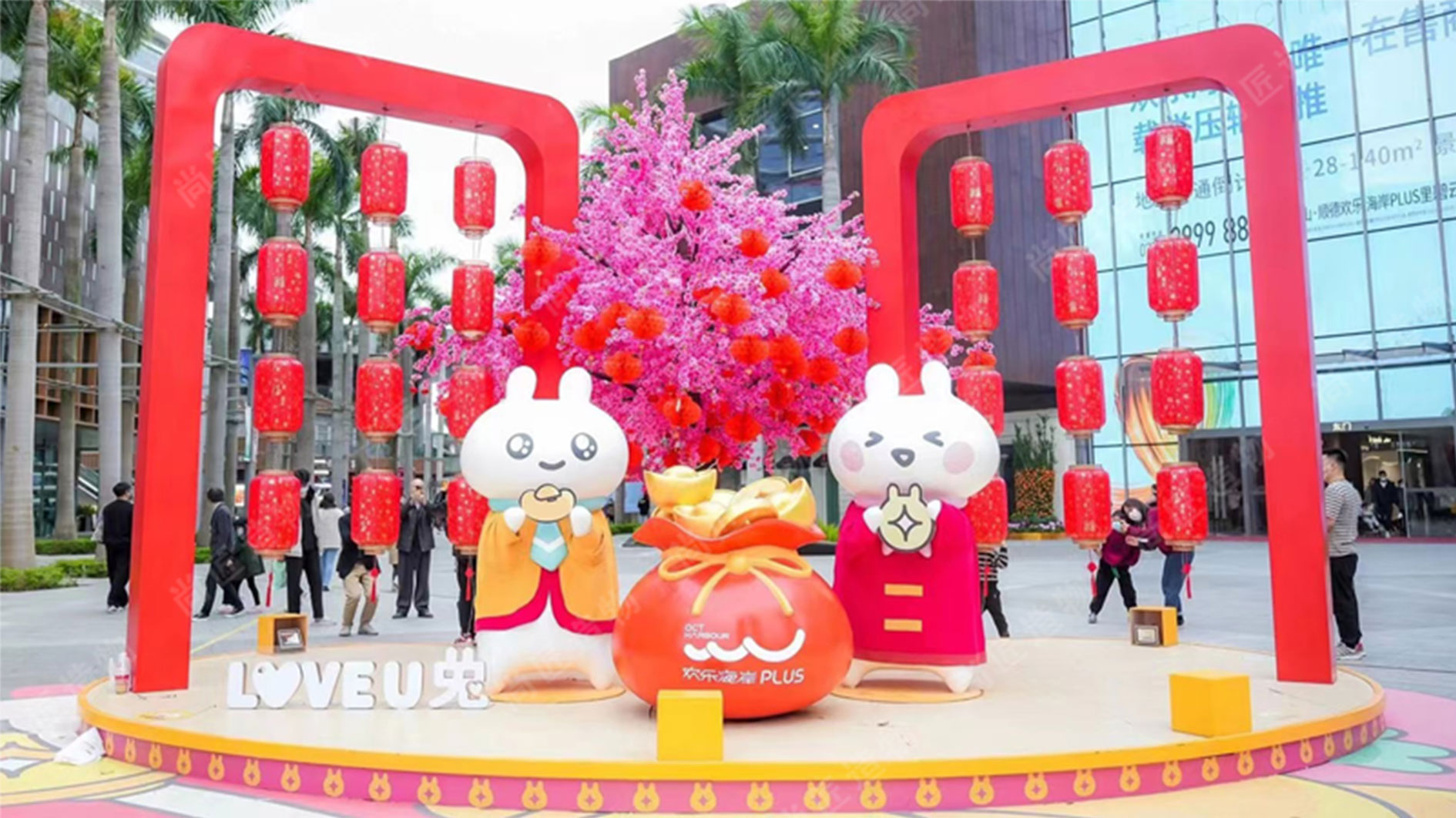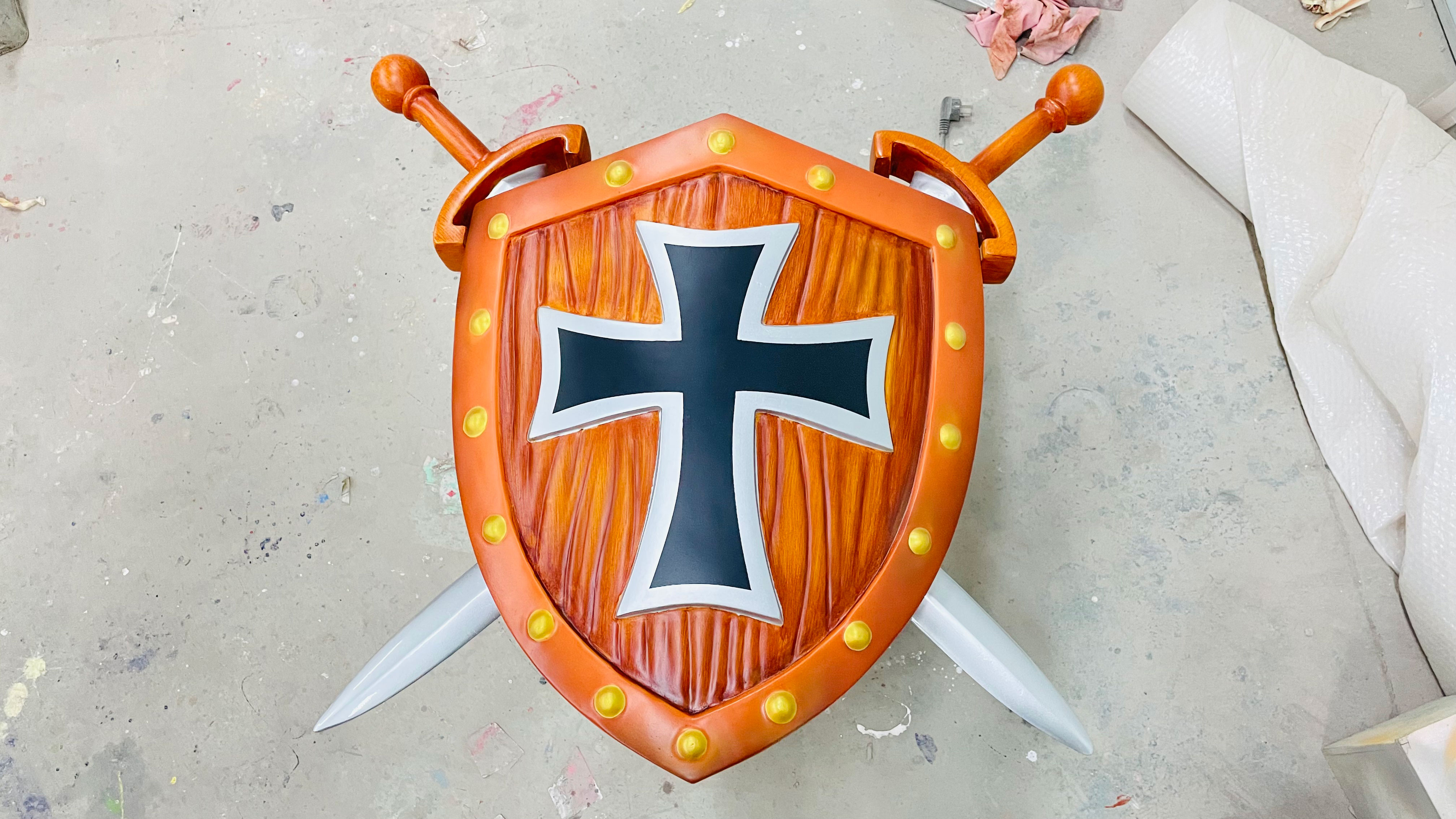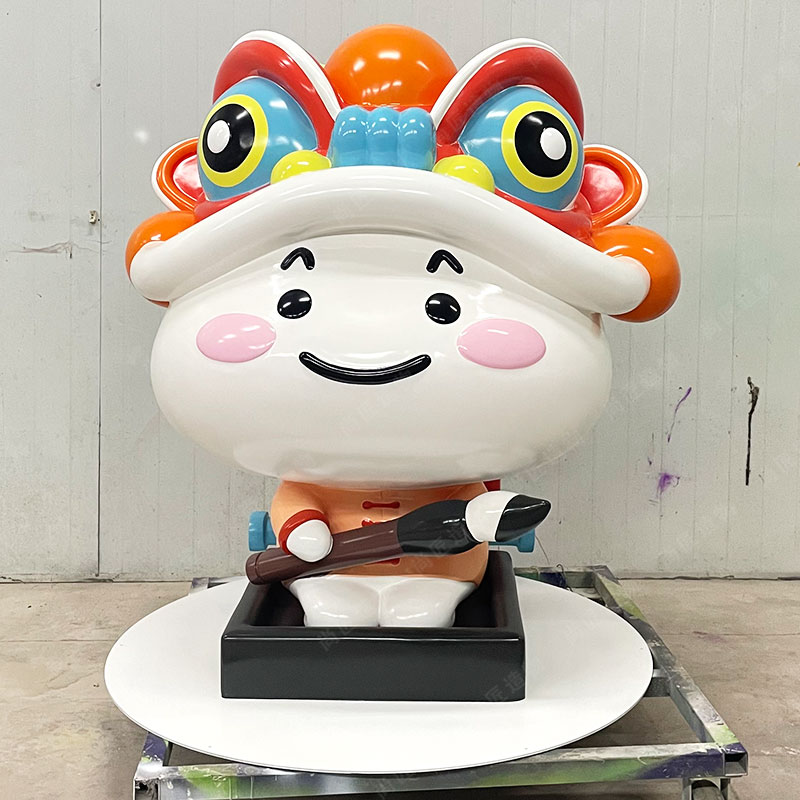Key Takeaways
Custom FRP IP character sculptures blend artistic vision with technical precision to transform spaces. Below are essential insights for understanding their value and application:
- Material Superiority: Premium fibreglass offers lightweight durability, weather resistance, and intricate detailing for lifelike characters.
- Structural Integrity: MS (mild steel) frames provide robust internal support, ensuring stability for large-scale installations.
- Design Flexibility: Global design expertise enables tailored aesthetics, from whimsical hotel mascots to minimalist residential pieces.
| Feature | Benefit |
|---|---|
| Fibreglass Durability | Withstands UV exposure, moisture, and corrosion |
| MS Frame Integration | Supports heights up to 15m without deformation |
| Custom IP Adaptation | Aligns with brand themes or personal styles |
For architects and designers, these sculptures serve dual purposes: functional art and spatial storytelling. Hotels leverage them to enhance thematic lobbies, while homeowners integrate sculptural focal points into gardens or living areas. The process balances artistic collaboration (concept sketches, 3D modeling) with engineering rigor (load calculations, material testing). By merging creative and technical disciplines, FRP IP sculptures redefine how spaces engage audiences.

Custom FRP IP Sculpture Design Process
The creation of custom FRP (Fiber Reinforced Polymer) IP character sculptures begins with a collaborative consultation to align artistic vision with functional requirements. Designers analyze spatial dimensions, theme coherence, and client branding to draft preliminary sketches. Advanced 3D modeling software then refines proportions and structural integrity, ensuring compatibility with MS (Mild Steel) frames for load-bearing support.
Material selection follows, prioritizing UV-resistant fibreglass for outdoor durability and smooth surface finishes. For dynamic installations, such as kinetic sculptures, engineers integrate flexible resin blends to accommodate movement without compromising form. Molding techniques—hand-layup or spray-up—are chosen based on detail complexity, with layers cured under controlled temperatures.
Iterative prototyping allows clients to review scale and aesthetics before full production. Post-processing includes sanding, priming, and custom painting, often using automotive-grade coatings for weather resistance. Final installation involves securing the sculpture to pre-engineered foundations or architectural features, ensuring long-term stability. This phased approach balances creativity with technical precision, adapting seamlessly to hotels, public spaces, or residential projects.

Benefits of Premium Fibreglass in Sculpting
Premium fibreglass-reinforced polymer (FRP) offers unmatched advantages for crafting durable, lightweight sculptures. Unlike traditional materials, FRP resists corrosion, UV damage, and extreme temperatures, making it ideal for indoor and outdoor installations. Its high strength-to-weight ratio allows artists to create intricate details—such as lifelike facial expressions or flowing fabric textures—without compromising structural integrity.
"For IP character sculptures, fibreglass ensures longevity while maintaining vibrant colors," notes a studio designer. "Always opt for UV-stabilized resins to prevent fading in sun-exposed areas."
The material’s flexibility supports complex shapes, enabling seamless integration with realistic sculpture techniques. For commercial projects like hotels, this means weatherproof installations that retain their aesthetic appeal for decades. Additionally, fibreglass requires minimal maintenance compared to metals or stone, reducing long-term costs.
A practical tip: Pair FRP with protective gel coatings to enhance surface smoothness and scratch resistance. This combination is particularly effective for high-traffic spaces where sculptures may face accidental contact. By balancing artistic precision with engineering reliability, premium fibreglass elevates both form and function in custom IP designs.
MS Frame Integration for Durable FRP Art
Structural integrity forms the backbone of lasting FRP sculptures, particularly when designing large-scale or dynamic IP character pieces. Mild steel (MS) frames provide unmatched load-bearing capacity, ensuring sculptures maintain their shape under environmental stressors like wind, temperature shifts, or public interaction. Unlike traditional materials, MS frameworks are welded to match precise design specifications, enabling seamless integration with fibreglass-reinforced polymer (FRP) layers. This combination balances rigidity with lightweight properties, critical for installations in high-traffic hotel lobbies or outdoor architectural features.
Advanced corrosion-resistant coatings on MS frames further extend artwork longevity, even in coastal or humid environments. Engineers often use modular assembly techniques, allowing complex geometries—such as exaggerated poses or oversized accessories—to be securely anchored. For instance, a fiberglass sculpture featuring a leaning cartoon mascot requires internal steel bracing to offset weight distribution challenges. Designers also leverage powder-coated MS structures to match color schemes, ensuring the framework remains invisible beneath polished FRP surfaces. By prioritizing material synergy, artists achieve both aesthetic precision and decades-long durability.

Creating Unique Hotel Spaces with FRP Characters
Integrating custom FRP IP character sculptures into hotel environments offers a dynamic way to elevate guest experiences while reinforcing brand identity. These lightweight, weather-resistant sculptures—crafted from premium fibreglass reinforced polymer (FRP)—allow designers to transform lobbies, courtyards, or thematic zones into immersive storytelling spaces. For instance, a luxury resort might commission a series of whimsical mascots reflecting local folklore, while a business hotel could opt for sleek, abstract forms that echo architectural minimalism.
The durability of FRP ensures longevity even in high-traffic areas, especially when paired with corrosion-resistant stainless steel sculpture frames for structural stability. Collaborative design workflows enable hotels to align sculptures with existing decor—adjusting proportions, textures, or finishes to complement interior themes. Beyond aesthetics, FRP characters serve functional roles as wayfinding markers or interactive photo backdrops, enhancing both visual appeal and spatial navigation. By blending global design expertise with site-specific storytelling, hotels can craft environments that resonate emotionally with guests while standing apart in competitive markets.
Global Design Expertise for Custom IP Sculptures
Building on advancements in material science and structural engineering, global design expertise plays a pivotal role in transforming IP character sculpture concepts into tangible art. Designers from Asia, Europe, and North America collaborate to merge regional aesthetics with universal storytelling principles, ensuring sculptures resonate across cultural contexts. For instance, Japanese studios might emphasize minimalist lines for hotel lobbies, while Italian artisans incorporate baroque-inspired textures for architectural landmarks. This cross-pollination of styles enables precise adaptation of fibreglass sculptures to client-specific themes, whether reimagining cartoon characters for theme parks or crafting abstract figures for corporate plazas.
Advanced 3D modeling tools allow teams to simulate how sculptures interact with light, weather, and spatial dynamics before fabrication begins—a critical step for projects spanning tropical resorts to urban high-rises. Material specialists further advise on balancing artistic detail with structural viability, particularly when integrating MS frames into gravity-defying designs. Recent collaborations between Scandinavian designers and Middle Eastern architects demonstrate this synergy, producing wind-resistant FRP installations that maintain intricate surface patterns. By leveraging globally tested techniques, creators ensure each piece meets both aesthetic ambitions and long-term durability requirements, bridging imagination with engineering.

FRP Sculpture Applications in Modern Architecture
FRP sculptures have become integral to contemporary architectural design due to their versatility and adaptability. Architects leverage fibreglass-reinforced plastic (FRP) to create large-scale installations that blend aesthetics with structural functionality. Common applications include facade embellishments, rooftop installations, and interactive public art in plazas or corporate campuses. Unlike traditional materials like stone or metal, FRP’s lightweight nature allows for complex, gravity-defying shapes—ideal for futuristic themes in urban landmarks or mixed-use developments.
A key advantage lies in FRP’s compatibility with modern engineering standards. For instance, integrating MS (https://en.artmovr.com/) projects or abstract patterns that complement minimalist architecture.
Sustainability also drives FRP adoption, as recycled materials can be incorporated without compromising durability. From parametric design installations to thematic sculptures enhancing transit hubs, FRP bridges artistic vision with practical demands, making it a preferred choice for architects aiming to redefine spatial narratives.
Tailoring FRP Art for Residential Aesthetics
Integrating FRP sculptures into residential spaces requires balancing artistic vision with functional harmony. Unlike commercial or public installations, home environments demand subtlety in scale and thematic relevance. FRP’s lightweight nature and adaptability allow for sculptures that complement interior layouts or outdoor gardens without overwhelming limited spaces. For instance, a minimalist abstract figure might enhance a modern living room, while a whimsical character could enliven a children’s play area.
Designers often prioritize customization options such as size adjustments, weather-resistant finishes, and color palettes that align with existing décor. The use of fibreglass ensures durability indoors and outdoors, while MS frames provide structural stability for freestanding pieces. Homeowners increasingly seek sculptures that reflect personal narratives—like incorporating cultural motifs or family symbols—transforming generic spaces into storytelling environments.
Collaborating with artists familiar with residential projects ensures seamless integration. By merging technical precision with aesthetic sensitivity, FRP art becomes more than decoration; it evolves into a cohesive element of daily life, enriching homes with personality and purpose. This approach bridges the gap between artistic expression and livability, proving that functional materials can coexist with imaginative design.
Step-by-Step FRP IP Customization Guide
Customizing FRP IP character sculptures begins with a collaborative design consultation. Clients share their vision, space dimensions, and thematic goals, while designers analyze structural feasibility and material compatibility. Next, a 3D digital prototype is created, integrating details like posture, textures, and branding elements to align with the IP’s identity.
Once the design is approved, artisans layer fibreglass-reinforced polymer (FRP) over a welded MS frame, ensuring lightweight durability and resistance to environmental stressors. Critical joints are reinforced with steel supports, and internal cavities are optimized for easy installation. During finishing, primers and UV-resistant coatings are applied to preserve color vibrancy, followed by hand-painted accents for depth.
The final phase includes site-specific adjustments, such as anchoring systems for uneven surfaces or modular designs for large-scale installations. Throughout the process, engineers conduct load tests and weather simulations to guarantee longevity. This systematic approach balances artistic expression with technical precision, transforming abstract concepts into functional artworks that resonate with their intended environment.

Conclusion
Custom FRP IP character sculptures offer a transformative way to enhance spaces, blending artistic vision with technical precision. By integrating premium fibreglass materials and durable MS frames, these sculptures balance aesthetic appeal with structural resilience, ensuring longevity across indoor and outdoor environments. Whether tailored for hotels seeking thematic storytelling, modern architectural projects demanding bold statements, or residential settings prioritizing personalized elegance, the adaptability of FRP ensures each piece aligns with its intended purpose.
Global design expertise further elevates the customization process, allowing creators to translate abstract concepts into tangible art while maintaining cultural or brand-specific nuances. As industries increasingly prioritize unique spatial experiences, FRP sculptures stand out as versatile solutions that merge creativity with practicality. Their lightweight yet robust nature, combined with limitless design possibilities, positions them as enduring investments for redefining ambiance and visual identity in any context.
Frequently Asked Questions
What materials ensure durability in FRP sculptures?
Fibreglass-reinforced polymer (FRP) layers are bonded over MS (mild steel) frameworks, combining lightweight flexibility with structural resilience. This hybrid approach withstands environmental stress while maintaining intricate detailing.
How does the design process address copyright concerns?
Clients provide licensed IP references or collaborate with designers to create original characters. Legal teams verify permissions before prototyping to avoid infringement issues.
Can FRP sculptures adapt to extreme climates?
Yes—UV-resistant gel coatings and temperature-tolerant resins allow installations in coastal, desert, or high-humidity zones. Sealed seams prevent water ingress, minimizing corrosion risks.
What limits apply to sculpture sizing?
FRP supports heights up to 15 meters when paired with reinforced MS bases. Smaller pieces (under 2 meters) prioritize detail, while larger works focus on structural integrity.
How do maintenance needs compare to bronze or stone?
FRP requires no polishing or anti-oxidation treatments. Biannual washing with pH-neutral cleaners and occasional wax coatings preserve surface finishes for decades.
Why choose FRP over 3D-printed alternatives?
Hand-laminated fibreglass allows thicker stress points and material variations impossible with uniform printed layers. This enables dynamic poses without internal support grids.
 ch
ch English
English





